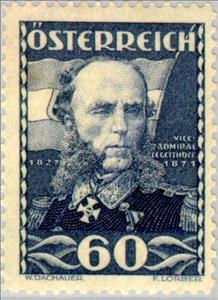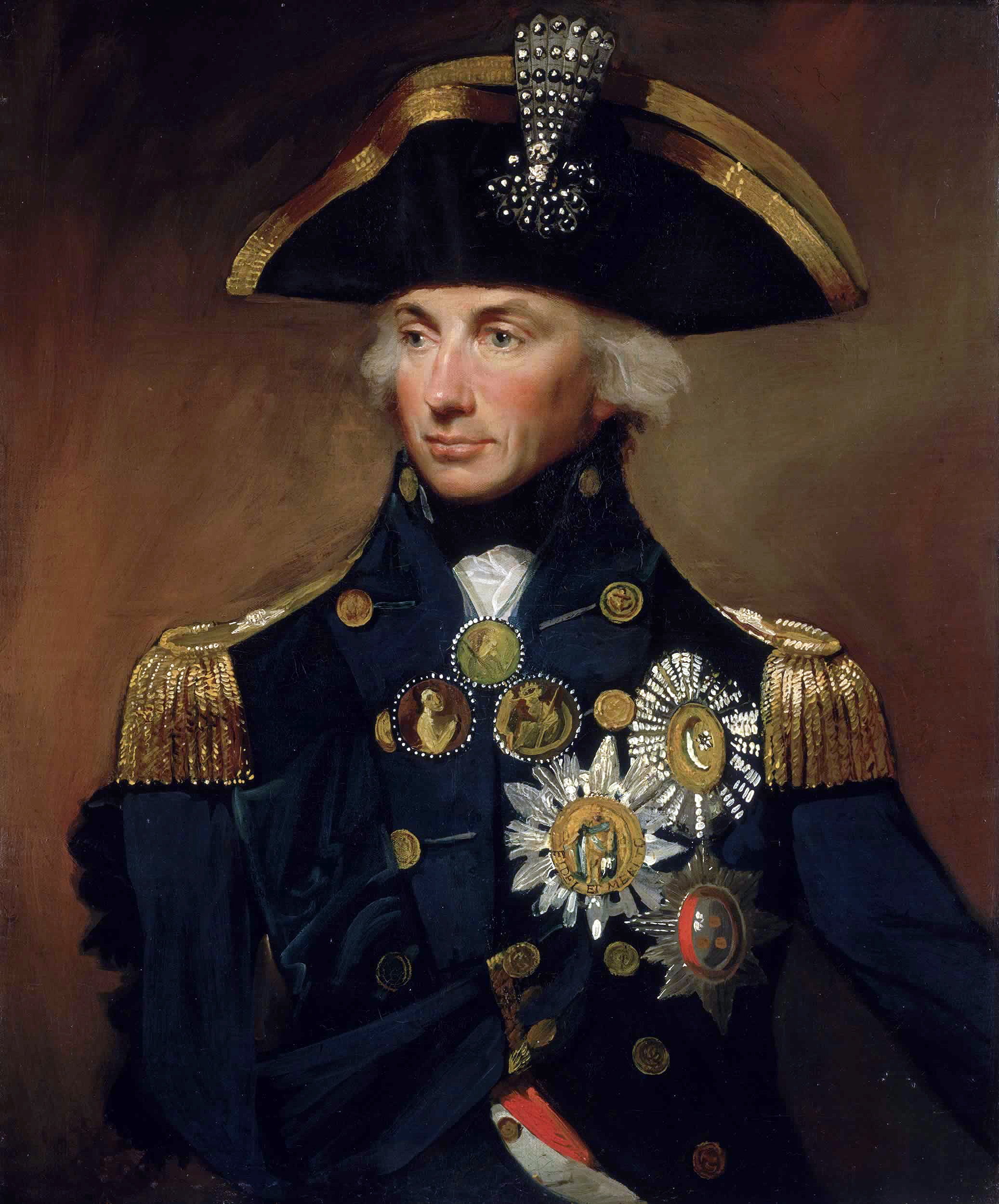Stamp: Tegetthoff (1827-71) vice-admiral, by Georg Decker (Austria 1935)
Tegetthoff (1827-71) vice-admiral, by Georg Decker (Austria 1935)
01 December (Austria ) within release Military leaders goes into circulation Stamp Tegetthoff (1827-71) vice-admiral, by Georg Decker face value 60+60 Austrian groschen
| Stamp Tegetthoff (1827-71) vice-admiral, by Georg Decker in catalogues | |
|---|---|
| Michel: | Mi:AT 621 |
| Yvert et Tellier: | Yt:AT 475 |
Stamp is vertical format.
Also in the issue Military leaders:
- Stamp - Prince Eugen (1663-1736) military leader face value 12+12;
- Stamp - Laudon (1717-90) field marshal, by Carl Caspar face value 24+24;
- Stamp - Archduke Carl (1771-1847) mil. leader, by Josef Kreutzinger face value 30+30;
- Stamp - Radetzky (1766-1858) field marshal, by Georg Decker face value 40+40;
- Stamp - Tegetthoff (1827-71) vice-admiral, by Georg Decker face value 60+60;
- Stamp - Conrad von Hötzendorf (1852-1925) field marshal face value 64+64;
Stamp Tegetthoff (1827-71) vice-admiral, by Georg Decker it reflects the thematic directions:
Painting is the practice of applying paint, pigment, color or other medium to a solid surface (support base). The medium is commonly applied to the base with a brush, but other implements, such as knives, sponges, and airbrushes, can be used. Painting is a mode of creative expression, and the forms are numerous. Drawing, gesture (as in gestural painting), composition, narration (as in narrative art), or abstraction (as in abstract art), among other aesthetic modes, may serve to manifest the expressive and conceptual intention of the practitioner. Paintings can be naturalistic and representational (as in a still life or landscape painting), photographic, abstract, narrative, symbolistic (as in Symbolist art), emotive (as in Expressionism), or political in nature (as in Artivism). A portion of the history of painting in both Eastern and Western art is dominated by spiritual motifs and ideas. Examples of this kind of painting range from artwork depicting mythological figures on pottery, to Biblical scenes rendered on the interior walls and ceiling of the Sistine Chapel, to scenes from the life of Buddha or other images of Eastern religious origin. In art, the term painting describes both the act and the result of the action. The support for paintings includes such surfaces as walls, paper, canvas, wood, glass, lacquer, clay, leaf, copper and concrete, and the painting may incorporate multiple other materials including sand, clay, paper, plaster, gold leaf, as well as objects. The term painting is also used outside of art as a common trade among craftsmen and builders.
Admiral is the rank, or part of the name of the ranks, of the highest naval officers. It is usually abbreviated to "Adm" or "ADM". The rank is generally thought to have originated in Sicily from a conflation of Arabic: أمير البحر, amīr al-baḥr, "commander of the sea", with Latin admirabilis ("admirable") or admiratus ("admired"), although alternative etymologies derive the word directly from Latin, or from the Turkish military and naval rank miralay. In the Commonwealth and the U.S., a "full" admiral is equivalent to a "full" general in the army, and is above vice admiral and below admiral of the fleet (or fleet admiral). In NATO, admirals have a rank code of OF-9 as a four-star rank.


